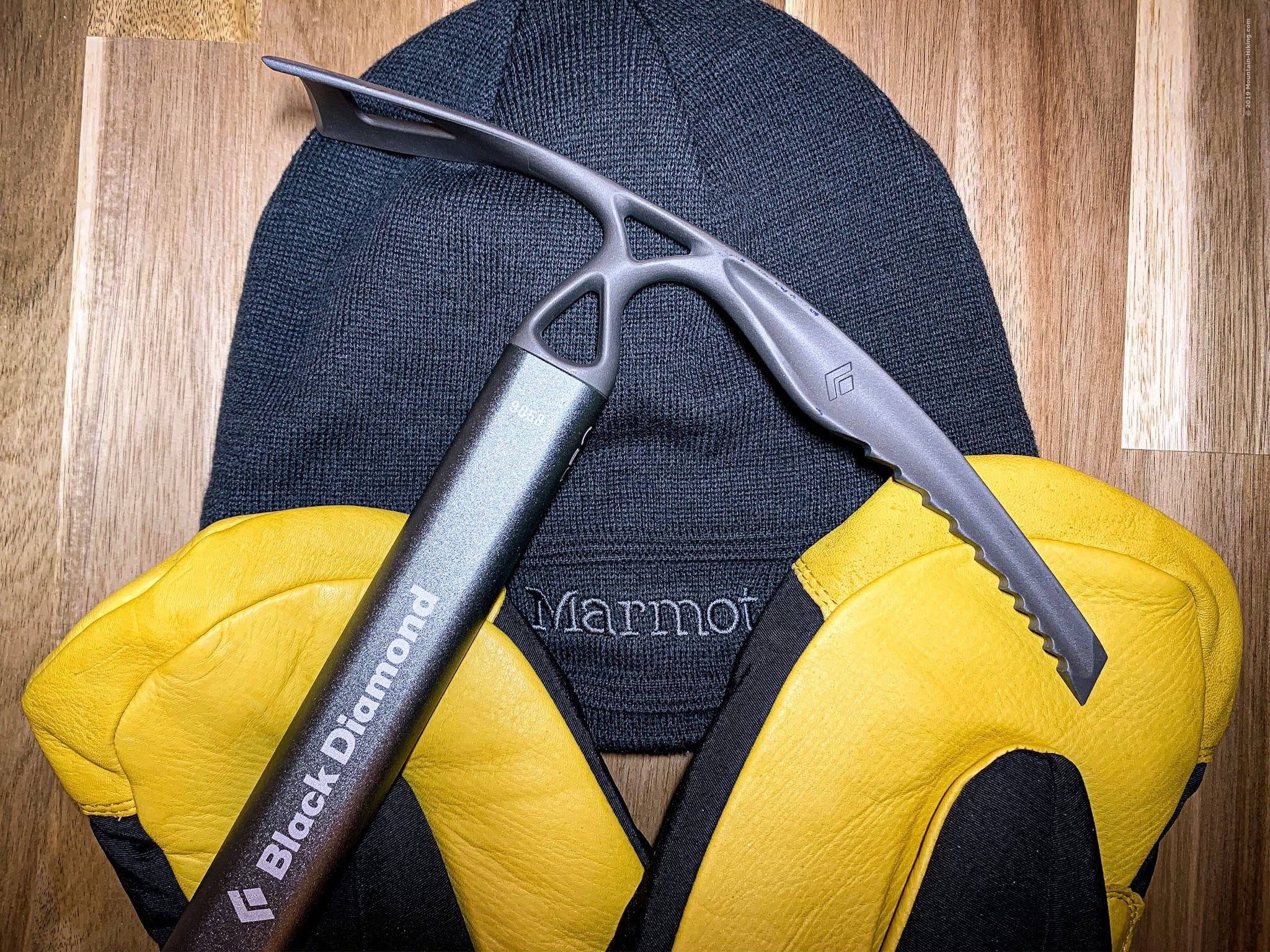Disclosure: This content may contain affiliate links. Read my disclosure policy.
Winter hiking in the Catskills is spectacular. Snow-blasted forests, bleached valley views, and bright blue skies. The days are shorter, the nights are longer — and the temperature is lethal. Make sure you have the best winter hiking gear and know how to use it.
This winter hiking gear list will help keep you warm and safe.
Winter Hiking Gear Concerns
The gear in this list is additional to any basic mountain hiking kit list. It’s also dialed-in for hiking the Catskills, where there are no long exposed hikes above the tree line. It does not cover everything needed to hike, for example, in the Adirondacks, where the winter environment is even harsher.
The fact that the Adirondacks are tougher does not mean that the Catskills are not tough. You can die here. Easily.
Warning! In winter, on a mountain, the risk of danger is hugely increased and the stakes are way higher. A lack of preparation or knowledge, or a missing piece of gear, could mean death in a very short time.
As always, do your own research, and experiment with gear combinations to discover what works best for you.
Temperature Control
Far more than at any other time of year, in winter any moisture on your body is a serious problem. Your number one goal is to regulate your core temperature so that you’re warm without ever being sweaty. Across the US apx 1300 people die every year from hypothermia. One of the first symptoms of hypothermia is fuzzy thinking, a potentially deadly problem for anyone on a mountain in winter.
Start your hike feeling cold, colder than you might like. After 15-20 minutes of hiking, you’ll be warmed up enough to know how many layers you want to engage. If you’re getting too hot, stop and decide which layer to take off and pack.
With experience you’ll learn how to stack your layers against the current conditions. I run pretty hot so my goal is usually, simply, to remember to slow down so I never get too hot in the first place.
Get full access…
Get instant access to the full version of this site and enjoy great supporter benefits: full galleries, full trail notes, early access to the latest content, and more.
Hot on the website right now…
Follow for more…
Follow my @TotalCatskills content on Instagram for regular hiking inspo and safe, inclusive community.
Winter Hiking Gear: Legs & Feet
The task for your winter clothing is to move moisture away from your skin while trapping lots of warm air next to it. Materials should be light but breathable: wool or synthetics. Zero cotton. Zero denim. On any part of your body: zero cotton or denim!
- Base Layer — when it gets below -5°C (23°F) I add this layer to trap warmth while keeping moisture wicked away from my skin
- Thicker Hiking Pants — I switch to thicker synthetic pants once there’s snow on the hills
- Liner Socks — I just started testing these and I feel like they make a big difference
- Smart Wool Socks — I rotate several pairs of wool socks, keeping one set in my backpack as a spare
- Gaiters — An absolute must have if you don’t want to be miserable
- Waterproof Hiking Boots — Popular brand names include: Merrell, Solomons, Vasques, Oboz, Scarpa. Some people like extra warm hiking boots for the snow, but I’ve never had an issue with cold feet in my regular boots.
“What fire could ever equal the sunshine of a winter’s day?”
— Thoreau
Winter Hiking Gear: Torso
Last season, for my winter hikes, I wore a thick ski jacket. It kept me warm but it didn’t breathe, so it trapped moisture. As soon as I stopped moving, the cold started creeping in around my torso. This season, I’m experimenting with a 5-layer system that allows me to regulate my temperature to a very fine degree.
- Long Sleeve Base Layer — I have a Capilene Lightweight Long Underwear Crew Top from Patagonia which I love (it feels silky and helps keep me dry) but, sadly, it’s no longer available. However, searching Patagonia or REI for base layer tops will yield dozens of similar products for around $50.
- Synthetic Wicking Tee — a thicker wicking layer above my base layer.
- Mid-Layer Jacket — a little thicker and warmer, but still breathable, and zippered; also has pockets. Some prefer a polar fleece layer here.
- Puffy — There are a lot of products to consider in the outer shell category. My LL Bean PrimaLoft Packaway Jacket is ridiculous: crazy light and super warm. I love it.
- Waterproof/Rain Layer — I have a packable waterproof rain jacket from Uniqlo, very thin and light, with a hood which is handy for hiking under snow-laden overhanging trees (keeps the snow from getting in around my neck)
Winter Hiking Gear: Upper Extremities
- Buff/Neck-Gaiter — I can’t recommend neck/face gaiters enough; they’re just fantastic
- Sunglasses — it’s bright out there, lots of UV bouncing around
- Hat — my Marmot hat is light but plenty warm, and it doesn’t make my head feel itchy — it also covers my ears, which is crucial
- Mittens — the ADK Winter School folk have a saying: “Gloves are optional. Mittens are mandatory.”
- Spare Gloves
- Chapstick
Mandatory Winter Hiking Gear
The two pieces of winter hiking gear you absolutely must have in the Catskills are microspikes and snowshoes. (Yaktrax will not do!)
Trail Crampons
I tried a pair of cheap, imported microspikes from Amazon. They broke on my first hike up Blackhead Mountain. I learned I didn’t want to cut any corners on traction, switched to Hillsound Trail Crampons, and haven’t looked back since.
I chose Hillsounds over Kahtoolas because I liked the base plate and Hillsound’s spikes are a little longer and more aggressive.
Lately, I’m seeing complaints about Kahtoola using cheaper materials, resulting in higher failure rates. YMMV.
Snowshoes
The two hot brands right now are MSRs and Tubbs. Those two companies get, by far, the most recommendations from Catskills hikers online. Read Snowshoe Basics.
I have a pair of MSR Evo Trail Snowshoes. I was able to pick them up for a great price because they’re not the latest and greatest MSRs. But they’re fantastic.
I know people love their MSR Lightning Ascents but I’ve had no issues with my Evo’s. Either will make snow-shoeing a dream.
Hardcore Winter Hiking Gear
Crampons?
I do not yet own a pair of 12-point crampons. I have no mountaineering skill or knowledge. All I know is that descents are always riskier than ascents, and this is doubly so in winter.
There are several places in the Catskills where crampons are advisable. A partial list would include:
- The west side of Sugarloaf a.k.a. “Suicide Mountain” in winter;
- The west side of Twin (one of the toughest trail sections in the park);
- Both the east and west sides of Plateau;
- The very steep route up and down Hunter via Becker Hollow;
- The very sketchy section northeast of Blackhead’s summit;
- The north side of Wittenberg.
Ice Axe?
There is some snobbery attached to carrying an ice-axe in the Catskills. Many people feel it’s overkill for this part of the world. But if you’ve ever seen someone chip out toe-holds in Cornell Crack, you know the sense in taking one along for the ride. There are several heavily ice-encrusted inclines where I see an ice axe being a big help. I carry a 65cm Black Diamond ice axe.
If you decide to buy one, read up on:
- how to buy the correct size
- how to self-arrest
- how to carry it safely
Ice axes are dangerous tools to carry, never mind use!
Balaclava?
I don’t have one, and I don’t hike on super nasty days, but sure, why not? You should feel good!
Ski Goggles?
Generally not required for the Catskills because all our summits are treed-in. But maybe on those super nasty days…
PLB/SPOT?
Totally a personal choice. Currently, I don’t carry either but I’m thinking about a SPOT for some extra security on my solo winter hikes.
Other Winter Hiking Gear
- Shortie Pad — the last two sections of a Therm-a-Rest Z Lite are so much better for sitting on than your butt
- Hand Warmers / Toe Warmers — I carry hand warmers as part of my basic kit, but have never had to use them but have given some to other hikers whose hands became painfully cold
- Power Brick & Lightning Cable — because really cold days will kill your phone battery quickly
- Extra Batteries — for your headlamp and DSLR camera
Top Tip: Batteries should be carried on your body to keep them from freezing.
Food & Energy in the Winter
In cold weather, you burn more calories. You’re also carrying a lot more gear over much tougher terrain. There will be hunger! Pack some extra high-calorie and quick-energy foods.
Top Tip: Snickers will freeze quickly but Reese’s Pieces Cups stay soft forever.
Winter Hiking Water & Hydration
So far, I’ve had good luck with my reservoir/drinking tube. I keep it blown clear and tuck the mouthpiece inside my jacket. It hasn’t yet frozen up.
I sometimes also pack a classic wide-mouth Nalgene water bottle.
On very cold days, I’ll pack a beverage thermos of hot coffee — or a wide-mouth thermos for hot soup.
Top Tip: store any water bottles upside down so ice forms away from the mouth.
Extra Safety Precautions for Winter Hikes
- Carry your phone close to your body. Your smartphone is rated to perform above freezing, and should not exposed to sub-freezing temps for more than short periods of time.
- Plan to arrive back at the parking area at least one hour before sunset.
- Prepare for the worst. Over-prepare. In 2010, an experienced hiker fell victim to worsening weather and died on Blackhead Mountain. The forecast changed after he’d left on his hike. We have better comms now, but always plan bail routes, and stay in touch with your people off the mountain.
- Set an itinerary and stick to it. Let your contact know all details, timings, and stay in touch.
- Stack the odds in your favor, not against your survival. To more experienced hikers, my tolerance for risk may seem low. To others, the fact I’m hiking a mountain solo in January is proof I’ve lost my mind. I’m noob and I know it. I will stack the odds in my favor until I gain experience.
- Keep an eye on friends: The folks at REI say, “A good hiking partner keeps an eye on their buddies. Regularly ask your friends how they’re doing and if you see pale spots on your friend’s face or they’re starting to get clumsy on the trail, make them stop and cover up exposed skin or add a warm insulating layer.”
Further Reading on Winter Hiking
Grab the Winter Day-Hike Checklist — a handy PDF download with everything you need listed in one place.
The winter hiking gear in this list is additional to a basic mountain hiking kit which should always include The Ten Essentials and the correct emergency number!
For a much deeper dive into winter mountain hiking kits, the ADK Winter Mountaineering School’s Student Handbook on this page. Their equipment list is a deeply informative read.
Weather Concerns
Get full access…
Get instant access to the full version of this site and enjoy great supporter benefits: full galleries, full trail notes, early access to the latest content, and more.
Hot on the website right now…
Follow for more…
Follow my @TotalCatskills content on Instagram for regular hiking inspo and safe, inclusive community.

